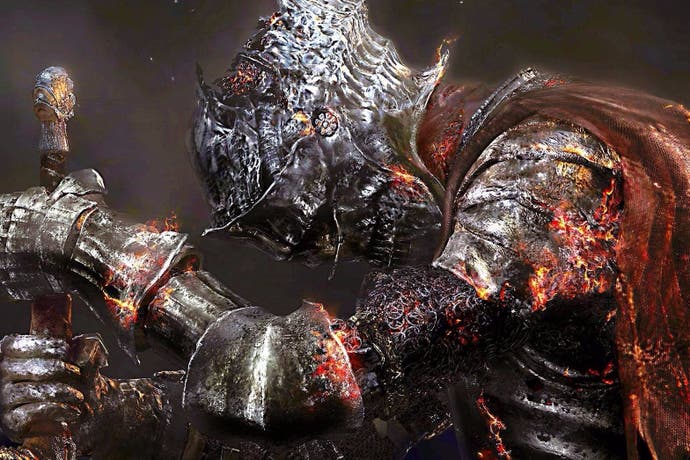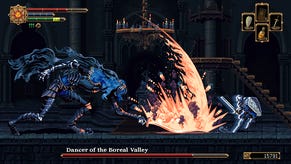Dark Souls 3: see how the Bloodborne engine runs on Xbox One
Initial performance and resolution metrics from Digital Foundry.
Due for a worldwide release on April 12th, Dark Souls 3 snuck in an early Japanese launch today - meaning that we can at last see this game running on Xbox One. Contact with this particular version has been a long time coming, with our only coverage of the game to date coming through the PS4's network beta. Finally, it's possible to gauge the performance of From Software's engine running on Microsoft hardware - essentially the technology at the heart of Bloodborne, a PS4 platform exclusive.
We were curious about the game's resolution, first and foremost. While Bloodborne and Dark Souls 3 run at a full 1080p on PS4, there were no certainties of the resolution setup on other formats. On a close pixel count, it turns out Xbox One dials its native resolution back to a straight 1600x900 in this case. Essentially, this puts us at 70 per cent of the PS4's overall pixel output.
As a result there's an increase in flickering across foliage across Dark Souls 3's opening mountainous area, and more pixel crawl overall on weaponry. Even so, the Xbox One release still looks impressive with its post AA in place, and we've had a great time playing Dark Souls 3's initial areas. The upscale from 900p doesn't dampen the experience to any tangible degree - though if you're looking for the most pristine visuals, we suspect PS4 or PC will be the ones to go for.
It's an intriguing insight into what might have happened if Bloodborne were free to roam on other formats. Sadly, some of the engine's more notorious quirks also translate to Xbox One. Take for instance the frame-pacing issue; Dark Souls 3 targets a v-synced locked 30fps on console, but once again, we see the engine producing irregular ordering of frames. This means that while we do hit a 30fps line on average, we still get the perception of stutter anyway, with several unique frames running in a row, followed by multiple duplicates.
It's not an ideal situation, though it was expected after we flagged it in the PS4 beta. However, the bigger concern is the genuine hits in frame-rate on Xbox One. At our very first step, we get a continuous stretch of play at 25fps in the opening section - a drop incurred by the heavy volumetric fog effects around this area's frosty high-rises. Boss battles produce similar issues on Xbox One, and we even reach frame-rates at near 20fps for larger-scale encounters on the High Wall of Lothric.
Fortunately, we get a 30fps average for most of this Lothric section, and it's only in these isolated spots where Xbox One struggles. As we assess the PS4 version in the coming days, it'll be interesting to put Xbox One's performance troublespots into context, and whether Sony's console has a similar profile. Visual settings are also largely as remembered from our three-day beta trial on PS4, though how all three releases hold up to more granular comparisons remains to be seen.
We'll be back with a full breakdown of both console platforms soon. For now though, it's surprising to see how well the Bloodborne engine fares on Xbox One, after a year-long stretch of exclusivity to Sony's format. It may settle for a native 900p, but the outlook for this version shows that the engine is flexible enough to meet the demands of either console - and also PC once it launches next month.
















